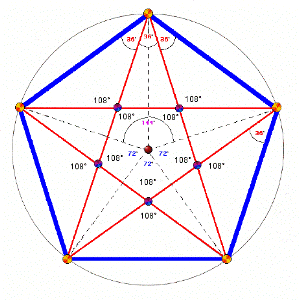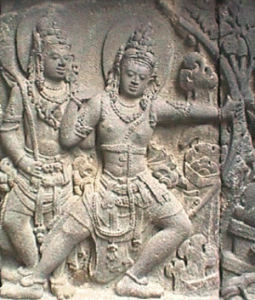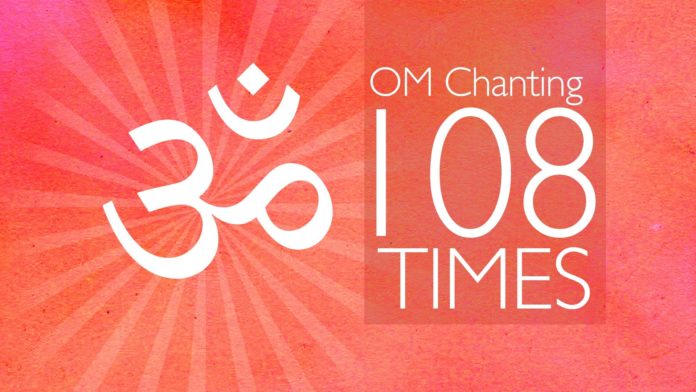The number 108 has held a multi-dimensional meaning throughout history. In geometric terms, it is a natural division of circle (108=36+72=9 X 12). In the Eastern part of the world, different traditions talk about the108 navamsas. The Shiva malas, or rosaries, both Tantric and Tibetan are composed of 108 beads. The number 108 is also one of great significance inside of the Rosicrucian order since it exemplifies the timeframe of some of their cycles. Interestingly enough, a leap year displays 366 days, and 3 x 6 x 6 gives 108.
Historical meaning of the Number 108:
The number 108 is considered sacred in many Eastern religions and traditions, such as Hinduism[3], Buddhism, Jainism[4], Sikhism and connected yoga and dharma based practices. Even the pre-historic monument Stonehenge is 108 feet in diameter. 108 is a number known to be referring to spiritual completion, and it is no surprise that the early Vedic sages were renowned mathematicians and in fact invented our number system. 108 is a Harshad Number, an integer divisible by the sum of its digits. Harshad in Sanskrit means “joy-giver.” 108 was the number of choice for this simple reason: 108 represent the whole of existence. There are said to be 108 types of meditation. Some say there are 108 paths to God. Indian traditions have 108 dance forms.
 Another interesting example, Hindu deities have 108 names, while in Gaudiya Vaishnavism, there are 108 gopis of Vrindavan. Recital of these names, often accompanied by the counting of the 108-beaded Mala, is considered sacred and often done during religious ceremonies. The recital is called NA Maja pa. Accordingly, a mala usually has beads for 108 repetitions of a mantra.
Another interesting example, Hindu deities have 108 names, while in Gaudiya Vaishnavism, there are 108 gopis of Vrindavan. Recital of these names, often accompanied by the counting of the 108-beaded Mala, is considered sacred and often done during religious ceremonies. The recital is called NA Maja pa. Accordingly, a mala usually has beads for 108 repetitions of a mantra.
In some schools of Buddhism, it is believed that there are 108 defilements. In Japan, at the end of the year, a bell is chimed 108 times in Buddhist temples to finish the old year and welcome the new one. Each ring represents one of 108 earthly temptations a person must overcome to achieve nirvana. Likewise, Zen priests wear juzu, a ring of prayer beads, around their wrists, which consists of 108 beads. The Lankavatara Sutra[5] has a section where the Bodhisattva Mahamati asks Buddha 108 questions.
The Buddhism tradition talks about the 108 earthly desires in mortals, 108 lies humans tell and 108 human delusions
The esoteric presence of the number 108 can be seen in various spiritual practices and theories: In Kriya Yoga, the maximum number of repetitions allowed to be practiced in one sitting is 108. Also, 108 Sun Salutations in yoga practice is often used to honor change, for example, the change of seasons, or at a time of tragedy to bring peace, respect, and understanding. It is said that if one can be so calm in meditation practicing pranayama to have only 108 breaths a day that enlightenment will come.
Energy Points[7]
 There are said to be 108 energy lines, or nadis, converging to form the heart chakra. Marma points are like Chakras, or intersection of energy, with fewer converging energy lines. On Sri Yantra, the Marmas have 54 intersecting energy lines where three lines intersect. Each has feminine, or shakti, and masculine, or Shiva, qualities. 54 X 2 = 108. Therefore there are 108 points that define the human body and the Sri Yantra or the Yantra of Creation. The same rule is observed in the Sanskrit language, with its 54 letters, both representing the two genders and they are also called Shiva and Shakti respectively; again, 54 X 2= 108.
There are said to be 108 energy lines, or nadis, converging to form the heart chakra. Marma points are like Chakras, or intersection of energy, with fewer converging energy lines. On Sri Yantra, the Marmas have 54 intersecting energy lines where three lines intersect. Each has feminine, or shakti, and masculine, or Shiva, qualities. 54 X 2 = 108. Therefore there are 108 points that define the human body and the Sri Yantra or the Yantra of Creation. The same rule is observed in the Sanskrit language, with its 54 letters, both representing the two genders and they are also called Shiva and Shakti respectively; again, 54 X 2= 108.
Importance in Astronomy and Astrology
The earth cycle is supposed to be of 2160 years = 20 x 108. The distance between the Earth and Sun is 108 times the diameter of the Sun. The diameter of the Sun is 108 times the diameter of the Earth. The distance between the Earth and Moon is 108 times the diameter of the Moon. The universe is made up of 108 elements according to ancient texts. The current periodic table claims a few more than 108.
There are 12 constellation and 9 arc segments. 9 times 12 equal 108. The 9 planets traveling through the 12 signs constitute the whole of existence. 9 x 12 = 108. The 27 nakshatras or lunar constellations spread over the 4 elements – fire, earth, air, water or the 4 directions – north, south, east, and west. This also constitutes the whole of existence. 27 x 4 = 108.
– The Buddhist rosary, where from is inspired the rosary of the Moslems, then straight-away as an inheritance of crusades by Catholic Christians, is constituted of 108 fragments of distinctive different human skulls .
108 sacred books constitute the holy writings for Tibetans
The Vedanta, according to the Hinduism tradition, recognizes 108 authentic doctrines (Upanishad) aiming to approach the Truth and to destroy Ignorance.
In Jain tradition is believed that they are 108 virtues.
Lankavatara Sutra ancient teachings refer repeatedly to many temples with 108 steps.
In Tibetan Buddhism it is believed that there are 108 sins or 108 delusions of the mind: abuse, aggression, ambition, anger, arrogance, baseness, blasphemy calculation, callousness, capriciousness (unaccountable changes of mood or behavior) censoriousness (being severely critical of others), conceitedness, contempt, cruelty, cursing, debasement, deceit, deception, delusion, derision, desire for fame, dipsomania (alcoholism characterized by intermittent bouts of craving), discord, disrespect, dis-respectfulness, dissatisfaction, dogmatism, dominance, eagerness for power, effrontery (insolent or impertinent behavior), egoism, enviousness, envy, excessiveness , faithlessness, falseness, furtiveness, gambling, garrulity (tediously talking about trivial matters), gluttony, greed, greed for money grudge, hardheartedness, hatred, haughtiness, high-handedness, hostility, humiliation, hurt, hypocrisy, ignorance, imperiousness (assuming power or authority without justification), imposture (pretending to be someone else in order to deceive), impudence, inattentiveness, indifference, ingratitude, insatiability, insidiousness, intolerance, intransigence (unwilling or refusing to change one’s views or to agree about something), irresponsibility, jealousy, know-it-all, lack of comprehension, lecherousness, lying, malignancy, manipulation, masochism, mercilessness, negativity, obsession, obstinacy, obstinacy, oppression, ostentatious, pessimism, prejudice, presumption, pretense, pride, prodigality (spending money or using resources freely and recklessly), quarrelsomeness, rage, rapacity (being aggressively greedy or grasping), ridicule, sadism, sarcasm, seduction, self-denial, self-hatred, sexual lust, shamelessness, stinginess, stubbornness, torment, tyranny, unkindness, unruliness, unyielding, vanity, vindictiveness, violence, violent temper, voluptuousness, wrath.
According to Chinese and Indian Martial Arts: Marma Adi and Ayurveda, there are 108 pressure points in a human body.
Ageless Wisdom

Readers like you, make ESHADOOT work possible. We need your support to deliver quality and positive news about India and Indian diaspora - and to keep it open for everyone. Your support is essential to continue our efforts. Every contribution, however big or small, is so valuable for our future.












good to remind the importance of 108.
have you done jap with mala 108 beads?
bnbhanot